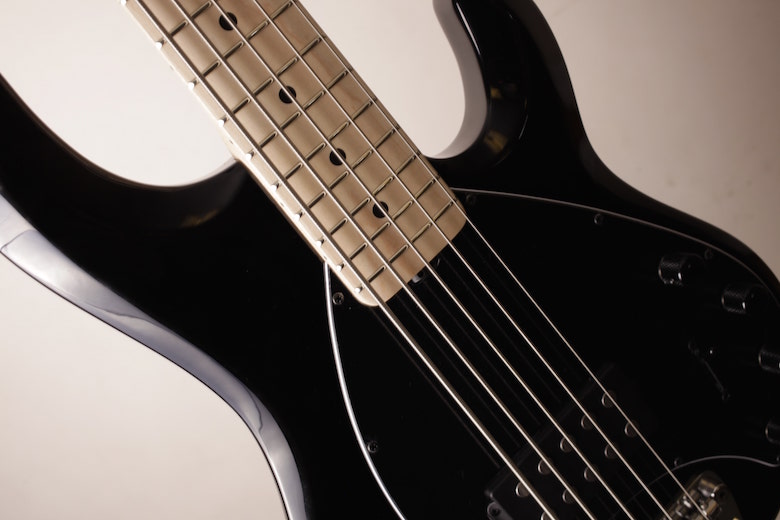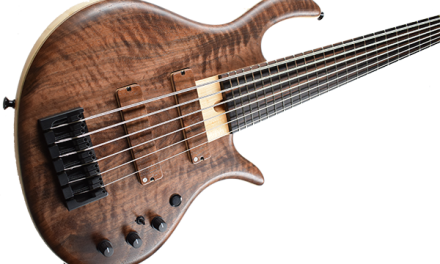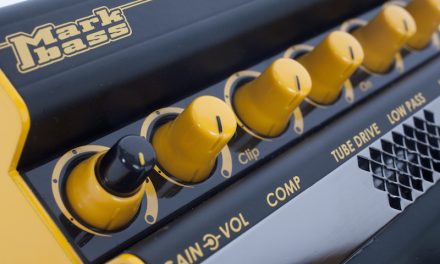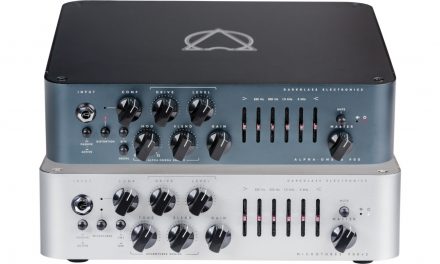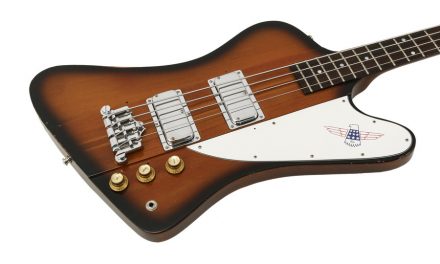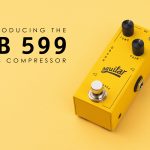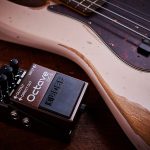The StingRay 5 remains as popular as ever. Stefan Redtenbacher get to grips with some five-string sting.
Design
As we have come to expect from Music Man, the StingRay 5 is solidly built with a distinctive style that will appeal to a broad spectrum of the bass-playing community. The ash body has a high-gloss finish complete with an iconic‘teardrop’ scratchplate and a fairly square heel join consisting of a six-bolt plate. The neck is maple and has been treated with gunstock oil and a hand-rubbed special wax blend that lends the surface a smooth, more natural feel. There’s not a great deal of contouring in the body, though everything feels comfortable enough. One of the things that marked the StingRay out from the crowd back in the late ’70s was its single, oversized humbucker with large exposed polepieces. It’s wired to a three-position switch that selects the pickup in series, parallel or single-coil mode. The controls are completed by a master volume knob and three centre-notched active EQ controls, giving adjustable bass, middle and treble cut or boost. The chunky Music Man bridge is made from hardened, chrome-plated steel with stainless steel saddles. This design offers each string its own saddle, allowing accurate adjustment of action and intonation. A set of chunky, open-geared machineheads complete the hardware inventory with the G string tuner on the underside of the headstock in the trademark StingRay configuration.
Sounds
Plugging in, it’s easy to see why the StingRay 5 has remained the first port of call for so many players over the years. Unlike some active instruments, it retains a rounder, more retro sound, with nice boomy lows, balanced mids and a particularly responsive high end. The body feels reassuringly solid and comfortable to play, with a low-action that may take a little getting used to for those who like to really dig in. Having said that, the neck remains workable and despite boasting five strings rather than four, it’s relatively comfortable to get around. Using the EQ controls together to shape the overall sound, rather than looking to boost or cut certain frequencies individually, seems far more gig-friendly and retains the StingRay’s ‘honky’ edge. We were impressed by the extent you can fine-tune your tone by tweaking the active EQ, but it’s not until you introduce the versatility of the series/parallel/single-coil selector that things really begin to get interesting. The single-coil setting produces a thinner sound that lacks a little definition in either the low or high end, though there is definitely a vintage appeal to it. With the pickup in parallel, the sound instantly fills out, giving you a much warmer tone. This is likely to be the most widely used setting of the three. Series mode is the place to find those textbook humbucker tones. www.music-man.com
Spec Points
Built in: USA
Scale length: 864mm (34 inches)
Frets: 22, high profile
Neck: Maple, bolt-on
Fingerboard: Maple
Body: Ash
Pickups: 1 x Music Man humbucker, alnico magnets
Controls: 1 x volume, 3-band active EQ & 3-way pickup selector
Machine heads: Schaller BM, tapered string posts
Bridge: Music Man chrome-plated hardened steel bridge with stainless steel saddles
Weight: 4.5 kg (9.5 lb)
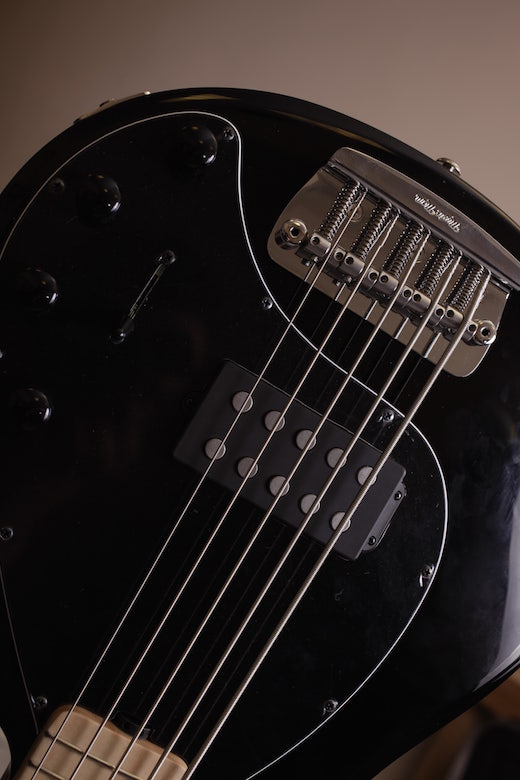
Over at Scott's Bass Lessons....
As a member of the faculty over at ScottsBassLessons.com, Stefan has been busy preparing some amazing content for SBL. Join over 15,000 bass players in the worlds leading bass education platform, which is packed with hours of step-by-step courses, live seminars, interviews and much more. For more info click the link below.

